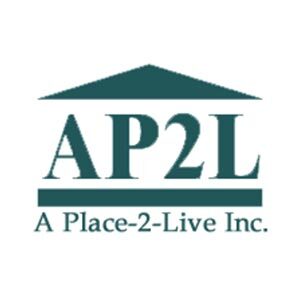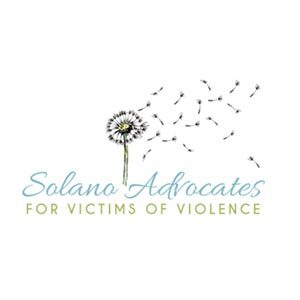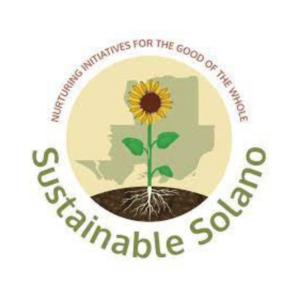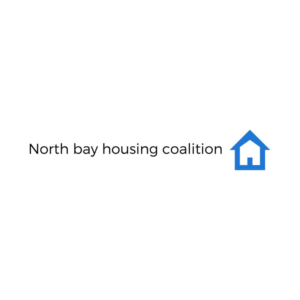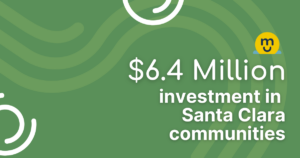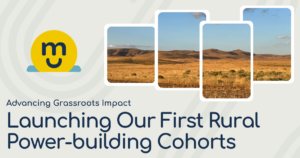Executive Summary
In early 2022, Magic Cabinet staff began identifying and conducting preliminary research on nonprofits in Solano County. This process aimed to identify three nonprofit organizations to partner with for Magic Cabinet’s long-term participatory grant-making model. This report summarizes Magic Cabinet’s research and engagement in funding Solano County nonprofit organizations. In addition, we highlight opportunities, challenges, and recommendations for future philanthropic initiatives in Solano County and propose a framework for engagement in similar regions.
Despite the initial challenges we experienced in our engagement process, we connected with several nonprofits excited to participate in Magic Cabinet’s capacity-building grant. Most nonprofits we spoke with had never received private philanthropic funding and were understandably unsure of our intentions. The decreasing pool of nonprofits in Solano County and actual philanthropic investment in the area suggest that many foundations deemed the region too complicated to fund. Instead of disengaging from Solano County, Magic Cabinet staff slowed our engagement timeline and prioritized building trust-based relationships with the nonprofit community.
To elevate and further the conversations from our 2022 Solano County nonprofit engagement, Magic Cabinet is pleased to present a series of observations and recommendations that aim to inform future philanthropic engagements in the area. We hope our commitment to Solano County can be used as a framework for engaging, advocating, and funding vastly under-resourced communities.
Engagement Process
Magic Cabinet Mission
Magic Cabinet provides funding and access to a peer network to small- and medium-sized nonprofits in Puget Sound and the San Francisco Bay Areas. The foundation’s unique participatory approach invests in nonprofit cohorts with a common geography and mutually supporting missions. Magic Cabinet’s approach brings together four elements of community-centered philanthropy: trust-based philanthropy, participatory decision-making, capacity building, and long-term investment. Since 2019, Magic Cabinet has awarded over $40 million to nonprofits in Washington and California.
Overview of Magic Cabinet Funding Methodology and Nonprofit Engagement
In our traditional engagements, prior to Solano County, Magic Cabinet has aimed to invite ten nonprofits to apply for Engagement with a priority on deep community ties, reflective leadership, and programmatic success. Magic Cabinet then gets to know the nonprofits deeply through site visits, surveys, facilitated discussions, document gathering, events and many follow-up conversations. Following the research stage, Magic Cabinet’s staff share their engagement findings, answer questions, and facilitate a conversation amongst a panel of regional community leaders and elected officials called the Advisory Committee.
After deliberation and selection, the Advisory Committee selects three nonprofit organizations to be part of the Magic Cabinet-funded Cohort. Magic Cabinet commits to convening the Cohort for a participatory grant-making process and supporting the Cohort’s approved capacity-building grants.
The standard Magic Cabinet nonprofit profile for our Cohort model contains the following traits:
- Recognized Nonprofits – Granted 501c3 tax determination by the Internal Revenue Service (IRS)
- Budget size – Operating on yearly budgets between $500,000–$2,500,000
- People Focused – Focused on bettering the lives of people in their community
- Locally Engaged – Situated in or near the communities they serve
- Community Trusted – Serving their community for at least three years
- Learning Organizations – Open to new ideas, seek best practices, analyze outcomes, and adjust accordingly over the five-year relationship
Adjusting of Magic Cabinet Funding Methodology to Needs of Solano County Community and Nonprofits
After looking at regional trends like gentrification and migration patterns and by speaking with on-the-ground community leaders, Magic Cabinet staff identified Solano County as the next region for its 18th Cohort. In early 2022, Magic Cabinet’s staff began identifying and conducting preliminary research on all nonprofits in the area that fit the Cohort nonprofit profile. Through this research phase, Magic Cabinet’s engagement team found few nonprofits who would fit our standard nonprofit Cohort profile. We confirmed these findings through dialogue with Solano County community leaders as well as empirical government data. Instead of disengaging from the region because there were not enough viable nonprofits, Magic Cabinet began reviewing and adjusting our funding requirements. Over a month-long period, Magic Cabinet evaluated our funding practices and requirements to better align with the needs of Solano County’s community of nonprofits.
There is no one-size fits all approach to philanthropic funding. Applying the same requirements in Solano County as a more densely populated community with numerous nonprofits was not effective or sustainable. Magic Cabinet still prioritized people-focused, locally engaged, and community-trusted nonprofits in Solano County. However, through our learnings, we shifted our norms for eligibility and funding, including:
Budget size – Operating on yearly budgets between $100,000–$500,000
Length of Cohort and funds distributed – To ensure sustainability of the three organizations selected, we decreased the pool of funds to be distributed from $2.5M over five years to $1.2M over four years. Magic Cabinet will also invest an additional $800K with the Solano County Cohort through other capacity-building resources like HR and financial services support.
Summary of Challenges
Nonprofit Desert
Throughout engagement, a picture of Solano County as a nonprofit desert with a decreasing number of nonprofits serving the community emerged.
Lack of Access to Philanthropic Institutions
Solano County nonprofits’ 900s showed they primarily obtained funds through government grants, individual contributions, and/or religious associations.
Underfunded Organizational Capacity
From Magic Cabinet’s engagement process, there appears to be a systemic divestment from philanthropic institutions in non-urban communities.
Philanthropic Challenges in Solano County
This section provides an overview of Solano County nonprofits’ barriers to building relationships with and receiving funding from philanthropic institutions.
Nonprofit Desert
Research shows1 that Solano County continues to rank near the bottom in the Bay Area when it comes to the number of nonprofits per population served. Magic Cabinet corroborated these external studies through research conducted by our program team in Solano County. While compiling a list of nonprofits that fulfilled our funding criteria2, we discovered that many organizations had shut down or experienced a severe decrease in staff and funding in the past three years.
After the initial research stage, Magic Cabinet gained more context through personal interviews with community leaders and executive directors. Through these conversations, a picture of Solano County as a nonprofit desert emerged. In addition, the decreasing number of nonprofits serving the community prevented collaboration among nonprofits. Given this smaller pool of nonprofits, Magic Cabinet was unable to move forward with several nonprofits because they did not have an active 501c3 status, did not meet our adjusted budget parameters (<$100,000 operating budget), and did not have the necessary staffing or fund development.
The lack of opportunities to develop partnerships among nonprofits is likely caused by philanthropic divestment in the region and the overall economic impact due to the Covid-19 pandemic. Most of the executive directors Magic Cabinet spoke to said their fundraising decreased substantially over the past three years.
Lack of Access to Philanthropic Institutions
Based on Magic Cabinet’s conversations, the nonprofits that we engaged with were new to interactions with philanthropic institutions like Magic Cabinet. Most nonprofits’ 990s showed they obtained funds through government grants, individual contributions, and/or religious associations. A review of 990 reports, coupled with the decreasing pool of nonprofits serving the area, suggests that many organizations may not have adequate access to funds for non-programmatic costs like administrative or development investment. Such limited and/or restricted resources indicate that nonprofits are unable to invest in their internal capacity and are falling victim to the nonprofit starvation cycle2.
During Magic Cabinet engagement conversations, organizations shared that there is little to no budget reserved for fundraising efforts. As a result, Solano County nonprofits do not have opportunities to meet funders and build meaningful relationships, further perpetuating the gap between Solano County nonprofits and philanthropic institutions.
Underfunded Organizational Capacity
As described above, there is a systemic divestment from philanthropic institutions into non-urban communities. Not only do shrinking budgets exacerbate the programmatic functions of Solano County nonprofits, but they also highlight the unique challenges they face in building organizational capacity. Every nonprofit we connected with during our engagement process shared their challenges in procuring adequate funding for recruitment, staff salaries, or designated administrative staff.
Over Magic Cabinet’s four-month engagement in Solano County, seven nonprofits were able to complete Magic Cabinet’s process. Each Solano County nonprofit shared that they have limited to no funds to dedicate to recruiting and retaining staff with specialized skills and knowledge in areas generally important to philanthropic institutions, such as data collection, analysis, and evaluation. While working with these organizations, we quickly discovered their passion for the work that they do. This level of commitment encouraged Magic Cabinet to work through the nonprofit’s capacity-related barriers.
Summary of Opportunities
Embracing Relationship Building
With additional resources, these nonprofits could build capacity necessary to attract other funding while building valuable relationships that will sustain their organizations.
Revise Limitations and Expectations
Philanthropic institutions can discover, fund, and partner with previously ‘unqualified’ or ignored regions with high-impact nonprofits serving dispersed populations.
Elevating Community Organizers
Community Organizers deeply understand local assets and barriers to opportunities. Many are underfunded organizations with innovative ideas trying to meet the community’s needs.
Philanthropic Opportunities in Solano County
Philanthropic institutions have an immense opportunity to apply creative approaches to engage in underfunded regions like Solano County. By modifying traditional engagement approaches to be more relational and less transactional, philanthropies can create long-term and impactful funding partnerships in underfunded areas.
Embracing Relationship Building Approach
With additional resources and training, these nonprofits will be able to build capacity necessary to attract other funding opportunities while building valuable relationships that will sustain their organizations. However, this may require funders to adjust their approach and make accommodations to ensure that the organizations have a chance at receiving funding. Once Magic Cabinet adjusted our engagement approach to first establish trust-based relationships, we were able to build transparent and effective communications with nonprofit staff. After establishing a trusted relationship, the organizations became more responsive to Magic Cabinet’s engagement process.
Solano County nonprofits may struggle to build relationships with philanthropic institutions due to their geographic proximity, lack of capacity, time, and resources. To overcome these challenges, Magic Cabinet invites other philanthropic institutions to adapt their strategies by engaging and visiting the Solano area, rather than relying on program officers located far away from funded projects.
Philanthropic Institutions Damaging Limitations and Expectations
The vast majority of philanthropic funding is concentrated in urban areas even though non-urban areas experience 25% higher poverty rate4. Though there is a need to divert more funds to non-urban areas, most philanthropic institutions operate within an urban bubble. Furthering this bias, philanthropic institutions often use a metric for programmatic impact as grant dollars vs ‘individuals served.’ With a higher population density, urban-based nonprofits will almost always serve more individuals. This will perpetuate philanthropic institutions’ bias in selecting urban-based nonprofit grant applications over non-urban-based organizations in communities like Solano County.
In contrast, one nonprofit or program in Solano County often serves multiple functions and provides critical services to a community. Though the population is not as concentrated, the community impact can be much greater. Funders may not be aware of the depth of impact that a single Solano County nonprofit can have on the health and well-being of its community. This can complicate the ability of a Solano County nonprofit to translate program effectiveness in comparison to an urban-based nonprofit. By modifying their approach, philanthropic institutions can discover, fund, and partner with previously ‘unqualified’ or ignored regions with high-impact nonprofits serving dispersed populations.
Engaging and Elevating Community Organizers
Solano County communities have a deep understanding of local assets and barriers to opportunities. As Magic Cabinet engaged with nonprofit and community leaders, it was evident that Solano County organizations were dedicated and passionate about the communities they serve. Organizations that Magic Cabinet connected with shared valuable insights into their support and impact in the communities they serve. Many nonprofit leaders shared a relational aspect to their program outreach. Often, they go out into the community making sure residents know their programs are there, rather than depending on the community coming to them or passive marketing. Though not sustainable long-term, one of the executive directors told us that she forfeited 50% of her salary to keep staff on; additionally, her team also volunteered to cut back hours.
As previously noted, despite funding shortages, Magic Cabinet engaged with many committed individuals and nonprofits. As a result, Magic Cabinet learned about many underfunded organizations with innovative ideas tirelessly trying to meet the needs of Solano County residents. Magic Cabinet firmly believes that additional funding will significantly foster community leaders’ and organizations’ ability to strengthen their infrastructure, build their capacity, and better serve the community. Magic Cabinet encourages our philanthropic partners to get “water” (money) into this funding desert.
Our Call for Philanthropic Partners
Magic Cabinet’s approach offers a new pathway for philanthropists to think differently about how they give and partner with nonprofits. Insights and recommendations from our engagement in Solano County were guided by our team’s approach of community-first grantmaking. The values bulleted below highlight Magic Cabinet strategies for foundations, grantmakers, and philanthropists to think differently about how to partner with nonprofits.
- Centering Nonprofit Expertise – Philanthropic efforts and funding should impact what matters most to nonprofits achieving their missions, not to the funder. Philanthropy must be willing to share power with nonprofits and community leaders who are closer to the issues.
- Philanthropic Mission – Philanthropy typically wants to see the focus of their funding reflected in their mission and historically pressure nonprofits to broaden the scope of a stated mission. Instead, Philanthropy should evaluate if we are a strong partner and truly center nonprofit expertise. Nonprofit partners assess themselves internally. If nonprofits aren’t seeing success, funders should change how we are working to support nonprofits.
- Continual Learning – Philanthropy can only create a solution-based environment if we remain open to learning throughout the philanthropic journey. Embrace successes and failures to enable growth, trust, and transparency throughout the funding relationship.
- Grant Methodology – Though guided by a philanthropic mission, any type or form of grant methodology must put the nonprofit first. We must recognize the racial, economic, and political inequalities traditional philanthropy has perpetuated and change practices and behaviors to become a supporter and collaborator, rather than dictating the work of nonprofits.
- Nonprofit Strength – Philanthropy doesn’t have all the answers, so why don’t we support nonprofits and their communities to determine how funding will amplify their impact? Let’s be open to nonprofits and follow their lead to where support is needed and where real change is happening. We should mold to the needs of a nonprofit, not the other way around.
- Nonprofit Outcomes – As Philanthropy yields power to nonprofits who are much closer to the issues we aim to solve, they should determine what metrics for success looks like. We should always ask how we can better support nonprofits to obtain more resources or make strategic investments to meet emerging needs.
Our approach to philanthropy is highly collaborative and we encourage other philanthropists to reach out to our team for conversation, consultation, and collaboration (the latter being our favorite option).
Citations:
-
Applied Survey Research & Solano Foundation (2016). Foundation Giving in the Bay Area WHO WINS, AND WHO’S LEFT BEHIND?, https://www.solanocounty.com/civicax/filebank/blobdload.aspx?blobid=22410
-
See OVERVIEW OF MAGIC CABINET FUNDING METHODOLOGY AND NONPROFIT ENGAGEMENT on page 1
-
Gregory, A. G., & Howard, D. (2009). The Nonprofit Starvation Cycle. Stanford Social Innovation Review, 7(4), 49–53., https://doi.org/10.48558/6K3V-0Q70
-
Nee, E. (2021). The Urban and Rural Divide. Stanford Social Innovation Review, 19(2), 4., https://doi.org/10.48558/JAEC-KM58

